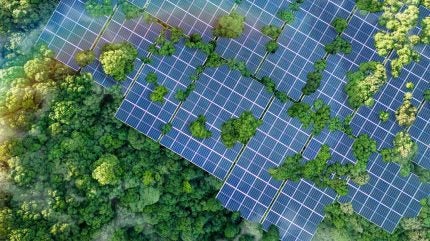
Coal-fired electricity generation in the Philippines is expected to decline for the first time since 2008, falling by 5.2% in the first half of 2025, according to the Institute for Energy Economics & Financial Analysis (IEEFA).
This marks a significant shift in the country’s energy landscape, indicating a move towards a cleaner energy transition.

Discover B2B Marketing That Performs
Combine business intelligence and editorial excellence to reach engaged professionals across 36 leading media platforms.
Despite some media reports attributing the decline of coal to the rise of LNG imports, while downplaying the role of clean energy, the data paints a different picture.
The Philippines has not added any new greenfield gas or LNG-fired power capacity between 2017 and 2024, according to figures from its Department of Energy.
In contrast, more than one gigawatt (GW) of solar power was added in 2024 alone, driven by government policies such as centralised auctions for renewable energy projects.
The country’s liberalised electricity market requires utilities to supply power in the “least cost manner” via competitive selection processes (CSP).

US Tariffs are shifting - will you react or anticipate?
Don’t let policy changes catch you off guard. Stay proactive with real-time data and expert analysis.
By GlobalDataTo date, only one greenfield LNG-fired power project has won a CSP, despite a moratorium on greenfield coal plants issued in 2020.
Furthermore, hydropower and solar generation saw more significant increases than gas generation in the first half of 2025, challenging the notion that LNG is the main driver behind coal’s decline.
Natural gas generation in the Philippines remains below historical levels, even after a rebound in 2024.
Extended outages in more than eight coal plants, particularly in the first quarter of 2025, offer a more plausible explanation for the reduction in coal generation than the growth of LNG, which remains more expensive than renewables and other energy resources.
Cost continues to be a decisive factor in the Philippines’ energy future. Despite claims of falling LNG prices, LNG in Asia remains above historical averages, and recent coal prices are nearly four times cheaper than LNG on an energy equivalent basis.
Generation rates from LNG-fired power plants have increased, putting upward pressure on electricity prices for Filipino consumers.
According to a statement, the IEEFA report said: “Price trends indicate clearly that renewables are likely to limit the long-term role of LNG in the Philippines.”
While the global oil and gas industry may promote LNG as a replacement for coal in Asia, the evidence from the Philippines suggests that renewable energy, bolstered by lower costs and government support, is the true driver behind the country’s energy transition.



